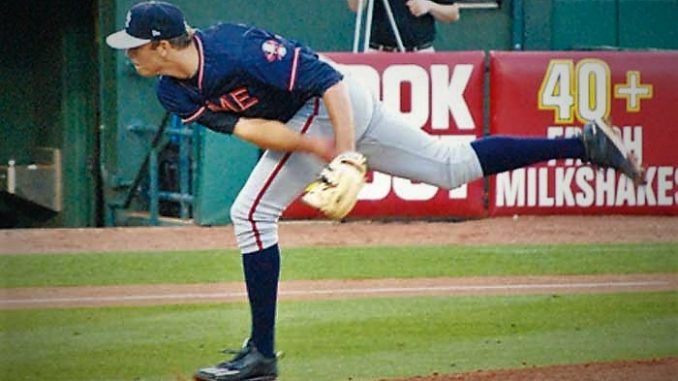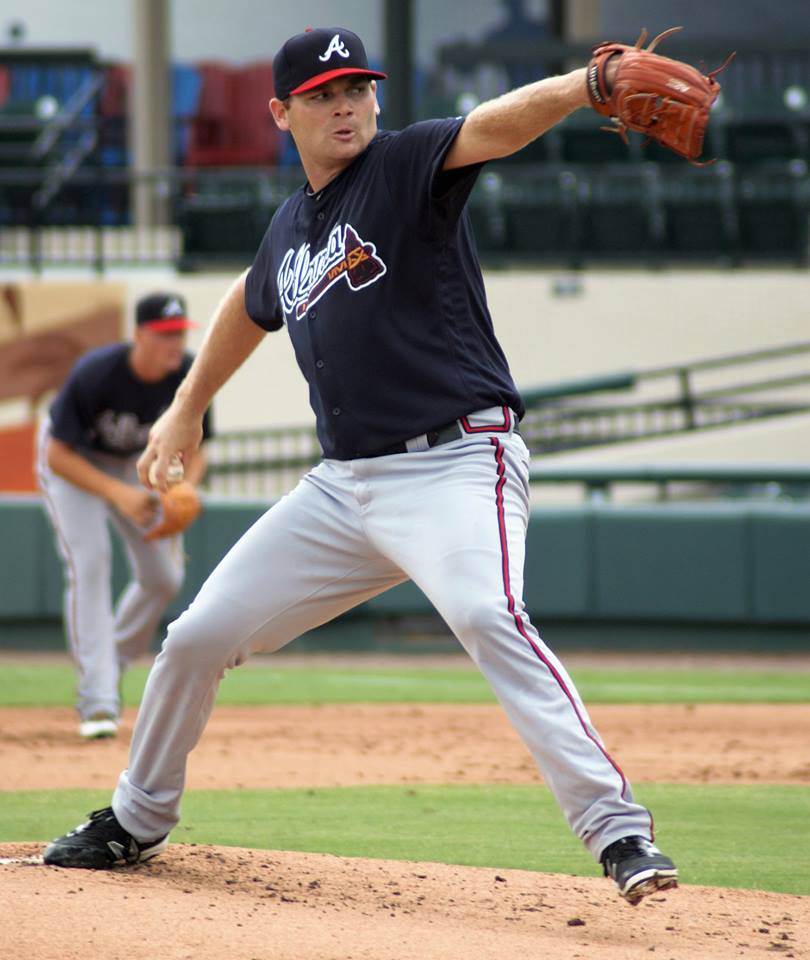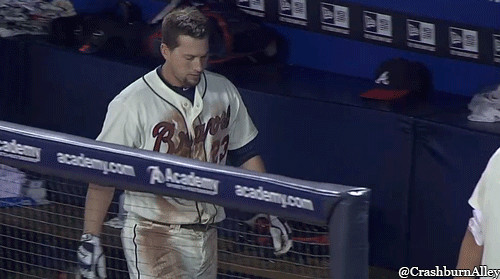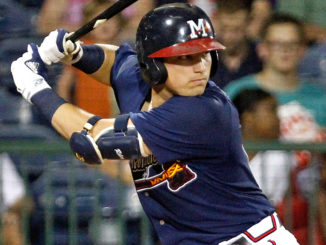
Today’s installment of Fifty Prospects In Fifty Days takes a look at a couple of former college pitchers that faced some adversity in 2017 but have some promising upside.
40. Jeremy Walker, RHP
Age: 22 | Throws: R
3.97 ERA | 3.56 FIP | 27 G, 27 GS | 138.1 IP | 1.95 BB/9 | 6.51 K/9
Current Assignment: Class A Rome
Acquired: Drafted, 5th Round – 2016
Midseason 2017 OFR Ranking: NA
History: Walker grew up a Braves fan in North Carolina and got the call every baseball-playing kid dreams of when he was selected by Atlanta in 2016 as a junior out of Gardner-Webb University. He debuted as a pro with Danville in 2016 pitching out of the bullpen to start the season but moved to the rotation mid-season to allow his four-pitch repertoire to have more breathing room. He ended up pitching to a 3.18 ERA/3.28 FIP in 39.2 innings, most notably showing excellent control by only walking 1.82 batters per nine innings.
Walker was assigned to Rome for the 2017 season and spent the whole year in the rotation. Walker started slowly, in part due to the porous infield defense that did not play well with his propensity to pitch to contact. At the end of June, Walker was sporting a 5.63 ERA and allowing a .297 batting average against. Walker’s performance improved as the infield defense did with Marcus Mooney and Jordan Rodgers becoming regulars, and Walker sported a 1.90 ERA from July through the end of the season.
Pitching: Walker is a big man, listed at 6′-5″ and 210 pounds, and he uses the height well, coming in at a 3/4s delivery but still getting downward plane on his pitches. Walker has exceptional control and will pound the zone down to induce groundballs, at a 53% rate for Rome. Walker has a 4-pitch repertoire of a low-90s fastball, a curveball, a slider, and a change-up. None of the pitches by themselves rate more than average, but his ability to command them low in the zone and avoid walks allows his stuff to work. Walker’s lack of a true swing-and-miss offering is what limits him, and can lead to some long innings if his defense isn’t playing well behind him or he otherwise fails to make proper offerings to the Gods of BABiP.
What’s Next: Walker will likely advance up to high-A Florida, where he will come under the tutelage of pitching coach Dennis Lewallyn, who tends to really help pitchers like Walker. Of his pitches, the change-up may be the most likely to become that elusive swing-and-miss pitch, and Walker will look to refine it at the next level.

39. Matt Withrow, RHP
Age: 24 | Throws: R
3.73 ERA | 3.22 FIP | 18 G, 15 GS | 79.2 IP | 3.50 BB/9 | 7.91 K/9
Current Assignment: Class A+ Florida
Acquired: Drafted, 6th Round – 2015
Midseason 2017 OFR Ranking: 49
History: The Braves have tapped three Texas Tech Red Raiders in the past three drafts, but righty Matt Withrow is the most likely of the bunch to make it to the Show (the other two are reliever Matt Custred and outfielder and #45 prospect Tyler Neslony). Withrow is also the younger brother of former Braves relief pitcher Chris Withrow. After a 13-start pro debut with Danville in 2015, Withrow skipped low-A Rome completely to start the season with the high-A Carolina Mudcats in 2016. Withrow was the most consistent starter for the Mudcats, which had a turbulent pitching rotation; only three pitchers finished with over 100 innings for the team, and Withrow’s 3.80 ERA was almost a full run better than the next lowest. Withrow saved his best pitching for down the stretch, with a 1.59 ERA in his last 7 starts with 45 strikeouts in 34 innings.
Withrow was the least regarded of the 2017 Opening Day Mississippi Braves rotation, which also included Max Fried, Kolby Allard, Mike Soroka, and Patrick Weigel. Nevertheless, for the first six weeks of the season, Withow matched his rotationmates start-for-start, pitching to a 2.88 ERA in his first 8 starts while striking out 37 batters. His final two starts in May were abbreviated outings however, and Withrow ended up on the DL with an undisclosed injury. Withrow would miss two months before resurfacing with the GCL Braves on a rehab assignment. After a couple of tune-up appearances, Withrow was sent to class high-A Florida for the rest of the season. Withrow was solid to finish out the season, pitching to a 3.08 ERA, but only exceeding 6 innings in his last start on September 3.
Pitching: Withrow fits the recent mode of young pitchers Atlanta likes to draft, standing tall at 6’-5” and 230 pounds. Withrow’s fastball can touch the mid-90s but he operates mostly in the low 90s. His fastball has a lot of natural sink, and when he’s on he will pound the strikezone and generate a lot of ground balls. His off-speed pitches are both works-in-progress, but both showed improved life before his injury. He has a slider that has a lot of break and is starting to become a reliable swing-and-miss offering. He can run it down and out of the zone against right-handers, but then backdoor it. It has a lot of deception as his arm action is almost identical to his fastball. He also uses a change-up to counter left-handed batters, and he has experienced improved results with it in 2017 though further refinement will be needed to hold left-handers in check; lefties slugged a full 100 points higher against Withrow than righties (.421 versus .321). If he continues to have difficulties with this he will likely eventually move to the bullpen.
What’s Next: Depending on how he shows in spring training, he could get an assignment to AAA Gwinnett, but I would guess a return to Mississippi will be in order. The depth of pitching in the organization is working against Withrow, and a move to the bullpen or a trade may be in order before too long in order to keep him advancing.
Of further note, Withrow is the start of the prospects on the list that I rate as having at least a 50% chance of making the major leagues. That it comes at #43 on the list demonstrates the current depth of the Braves system.




Leave a Reply